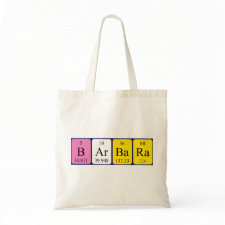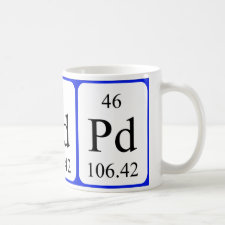
Authors: Godlewska-Zylkiewicz B, Lesniewska B, Wawreniuk I
Article Title: Assessment of ion imprinted polymers based on Pd(II) chelate complexes for preconcentration and FAAS determination of palladium.
Publication date: 2010
Journal: Talanta
Volume: 83
Issue: (2)
Page numbers: 596-604.
DOI: 10.1016/j.talanta.2010.10.005
Alternative URL: http://www.sciencedirect.com/science/article/B6THP-516M71W-1/2/bbf9e278c9c3ebf43d2c33b1bb7a9d5d
Abstract: New ion-imprinted polymeric (IIP) materials were synthesized by copolymerization of 4-vinylpyridine (VP) and styrene as functional monomers and divinylbenzene as a cross-linking agent with chelating complexes of Pd(II) in the presence of 2,2-azobisisobutyronitrile as an initiator. The complexes of Pd(II) with ammonium pyrrolidinedithiocarbamate (APDC), N,N'-diethylthiourea (DET), and dimethylglyoxime (DMG) were used for this purpose. Chloroform, ethanol, and cyclohexanol were applied as porogens. The ion-imprinted polymers were tested in a flow mode as sorbents for solid-phase extraction of palladium from aqueous solutions. The conditions of Pd(II) separation on all polymers were optimized. The efficiencies of retention of Pd on different polymers in the presence of high excess of interfering ions were compared. The effect of the used porogen on the analytical performance of the prepared polymers was also investigated. The calculated sorbent capacities for Pd(II) were in the range from 9.25 mg g-1 to 13.3 mg g-1. The sorbent with Pd(II) imprinted as Pd-DMG-VP complex in chloroform was used for preconcentration of trace amounts of Pd. The detection limit for 100 mL of the sample was 5 μg L-1 using flame atomic absorption spectrometry (FAAS). The developed method was applied for the determination of Pd in water samples
Template and target information: palladium ion, Pd(II)
Author keywords: Pd separation, preconcentration, ion imprinted polymer, solid phase extraction, flame atomic absorption spectrometry



Join the Society for Molecular Imprinting

New items RSS feed
Sign-up for e-mail updates:
Choose between receiving an occasional newsletter or more frequent e-mail alerts.
Click here to go to the sign-up page.
Is your name elemental or peptidic? Enter your name and find out by clicking either of the buttons below!
Other products you may like:
 MIPdatabase
MIPdatabase









